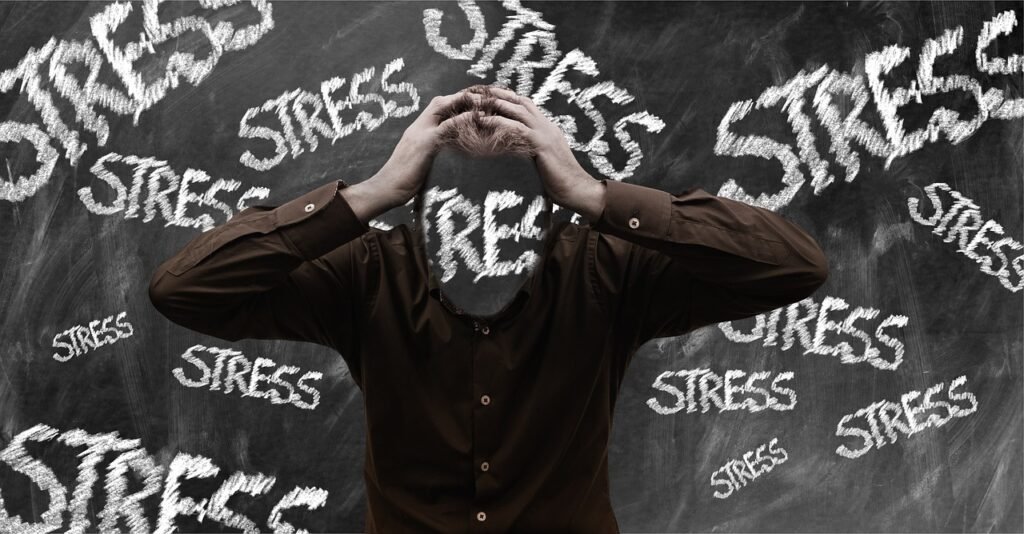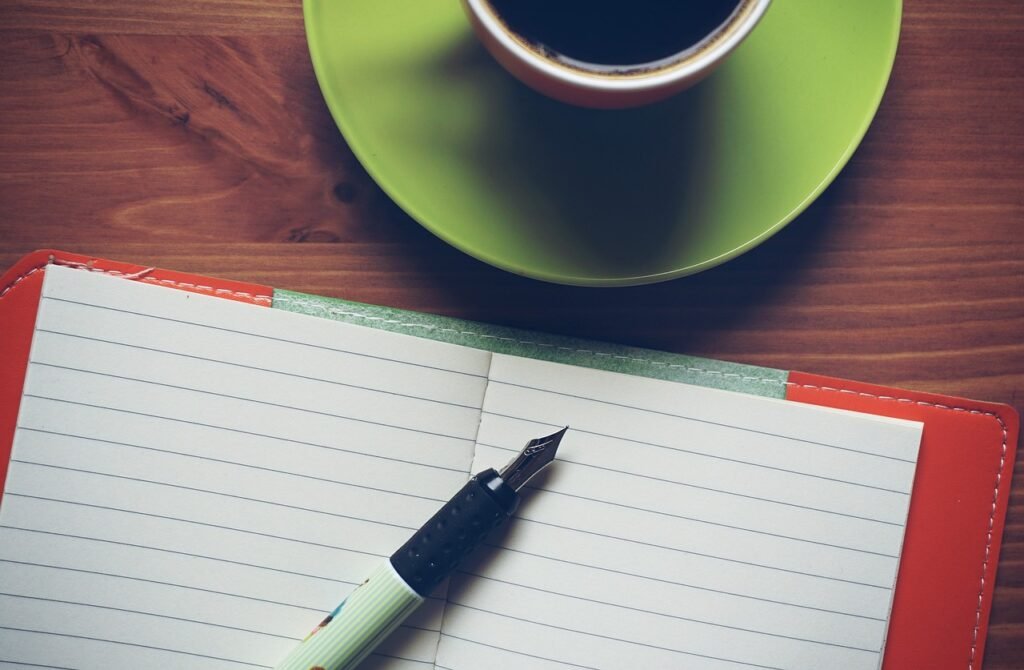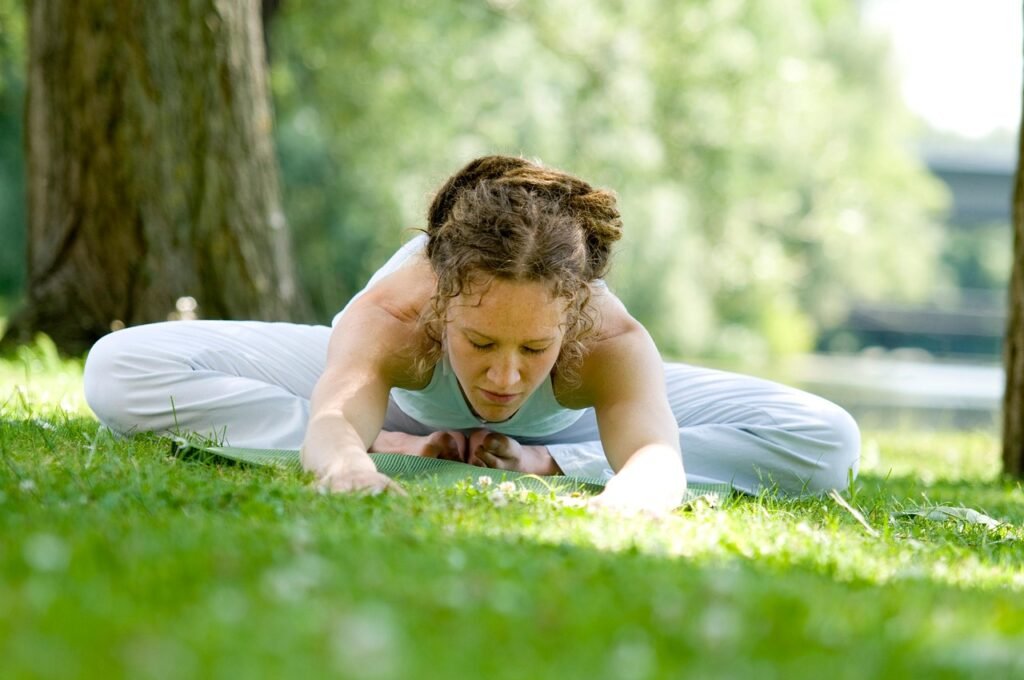
Introduction to Mindfulness
In our fast-paced world, finding effective ways to manage stress and anxiety can be challenging.
Mindfulness offers a gentle yet powerful approach to address these issues naturally.
At its core, mindfulness is about being fully present in the moment, aware of your thoughts, feelings, and surroundings without judgment.
This practice helps you shift your focus from worries about the past or future to the here and now, which can significantly reduce stress and anxiety.
Mindfulness is not just a single technique but a collection of practices that can be tailored to fit your lifestyle.
It encompasses activities like breathing exercises, meditation, and even mindful movement, each contributing to a more balanced and peaceful state of mind.
By dedicating even a few minutes each day to mindfulness, you can develop greater mental clarity and emotional stability.
One of the foundational aspects of mindfulness is learning to observe your thoughts and feelings without getting caught up in them.
This can be particularly helpful for those struggling with chronic stress or anxiety, as it creates a mental space where you can respond to situations more thoughtfully rather than react impulsively.
Over time, this practice can lead to a profound transformation in how you handle life’s challenges.
The benefits of mindfulness extend beyond mental health; they also positively impact physical well-being.
Regular mindfulness practice has been shown to lower blood pressure, improve sleep quality, and even boost immune function.
These physical benefits further enhance your ability to manage stress and maintain a sense of calm.
Mindfulness is accessible to everyone, regardless of age or experience level.
Whether you’re a busy professional, a student facing academic pressures, or someone dealing with the complexities of daily life, incorporating mindfulness into your routine can offer valuable relief.
It doesn’t require any special equipment or a significant time commitment; even a few minutes of mindful breathing or a short guided meditation can make a noticeable difference.
By embracing mindfulness, you open the door to a more serene and balanced life.
It’s an invitation to slow down, reconnect with yourself, and find peace amid the chaos.
Breathing Exercises

Breathing exercises are an accessible and powerful way to manage stress and anxiety.
At their core, these exercises involve focusing on your breath, which helps anchor you in the present moment.
One simple technique to start with is diaphragmatic breathing. Begin by sitting or lying down in a comfortable position.
Place one hand on your chest and the other on your abdomen.
Inhale deeply through your nose, allowing your diaphragm to expand and your abdomen to rise.
Hold the breath for a moment, then exhale slowly through your mouth, feeling your abdomen fall.
Another effective method is the 4-7-8 breathing technique.
This involves inhaling through your nose for a count of four, holding the breath for seven counts, and exhaling slowly through your mouth for a count of eight.
This method can help slow down your heart rate and promote a sense of calm.
Box breathing, also known as square breathing, is another technique that can be particularly useful in high-stress situations.
To practice box breathing, inhale through your nose for a count of four, hold the breath for four counts, exhale through your mouth for four counts, and pause for another four counts before taking the next breath.
This rhythmic pattern can help regulate your breath and bring a sense of balance.
For those moments when you need immediate relief from stress, try the quick coherence technique.
This involves taking a few deep breaths while focusing on the area around your heart.
As you breathe, try to recall a positive experience or think of something you are grateful for.
This combination of deep breathing and positive focus can rapidly shift your emotional state.
Adding a mindful element to your breathing exercises can enhance their effectiveness.
For instance, as you breathe, try to bring your attention to the sensations of the air entering and leaving your body.
Notice the temperature of the air, the movement of your chest and abdomen, and any subtle sounds associated with your breath.
This heightened awareness can deepen your sense of calm and presence.
Integrating these breathing techniques into your daily routine can provide significant relief from stress and anxiety.
Whether you’re at home, at work, or on the go, a few minutes of focused breathing can make a noticeable difference in your overall well-being.
Guided Meditation

Guided meditation is a valuable tool for those looking to ease into mindfulness practices, especially if you’re new to meditation.
This form of meditation involves listening to a narrator or recording that leads you through the process, offering gentle instructions and soothing imagery to focus on.
It’s like having a compassionate guide who helps you navigate the landscape of your mind, making it easier to stay present and engaged.
Many resources are available to assist you, ranging from apps and podcasts to online videos.
These guided sessions vary in length and style, so you can find one that fits your schedule and preference.
Some sessions might focus on relaxation, while others could emphasize visualization or emotional balance.
By listening to a guided meditation, you allow yourself to be gently directed away from distracting thoughts and toward a state of calm.
The key to effective guided meditation is to find a comfortable, quiet space where you won’t be interrupted.
You might choose to sit in a chair, lie down, or even recline on a sofa.
Once you’re settled, close your eyes and take a few deep breaths to center yourself.
As the narration begins, try to focus on the speaker’s words and the sensations in your body.
If your mind starts to wander, gently bring your attention back to the guidance.
One popular form of guided meditation is the body scan, where you’re led through a series of steps to become aware of different parts of your body, gradually releasing tension.
Another common type involves visualizations, where you’re invited to imagine a peaceful scene, like a serene beach or a tranquil forest.
These visualizations can create a strong sense of relaxation and mental clarity.
You might also encounter guided meditations that incorporate affirmations or loving-kindness practices.
These sessions often include phrases or intentions that promote self-compassion and positive thinking, helping to counterbalance feelings of anxiety or stress.
Guided meditation can be a deeply restorative practice that offers a structured yet flexible approach to mindfulness.
By regularly engaging with guided sessions, you can cultivate a habit of mindfulness that supports your emotional and mental well-being.
Body Scan Techniques

Body scan techniques can be an invaluable tool for increasing bodily awareness and reducing stress.
This practice involves mentally scanning your body from head to toe, noticing any areas of tension, discomfort, or relaxation.
The goal is to become more aware of your physical state and to gently release any tension you might be holding.
To begin a body scan, find a quiet and comfortable place where you can lie down or sit without interruption.
Close your eyes and take a few deep breaths to center yourself.
Start by directing your attention to your toes.
Notice any sensations you might feel—tingling, warmth, or even numbness.
Allow yourself to simply observe these sensations without judgment.
Gradually move your focus up to your feet, ankles, and legs.
Pay attention to each part of your body, noting any tightness or discomfort.
As you identify areas of tension, consciously relax those muscles.
You might find it helpful to visualize the tension melting away or dissolving with each breath.
Continue this process slowly, moving up through your body.
Focus on your abdomen, noticing how it rises and falls with each breath.
Be aware of any tightness or discomfort, and allow those areas to relax.
Move up to your chest and shoulders, regions where stress often accumulates.
Take extra time to breathe deeply and release any tension you might find there.
Next, bring your awareness to your arms, hands, and fingers.
Notice any sensations and let your muscles soften and relax.
Finally, focus on your neck, jaw, and facial muscles.
These areas can hold a lot of stress, so take your time to relax and let go.
Throughout the body scan, it’s normal for your mind to wander.
When this happens, gently guide your attention back to the part of the body you’re focusing on.
The practice of repeatedly returning your focus can help you build mental clarity and resilience.
By regularly practicing body scans, you can develop a deeper connection with your body and cultivate a state of calm and relaxation.
Mindful Walking

Mindful walking is a wonderful way to combine physical activity with mindfulness, allowing you to be fully present in each step you take.
This practice can transform a routine walk into a calming and grounding experience, providing a break from the busyness of daily life.
Start by choosing a quiet place where you can walk without interruptions.
This could be a park, a quiet street, or even a spacious room.
As you begin, focus on the sensation of your feet making contact with the ground.
Feel the texture of the surface beneath your feet, whether it’s soft grass, solid pavement, or a wooden floor.
Pay attention to the rhythm of your steps and the way your body moves.
As you walk, try to synchronize your breath with your steps.
You might inhale for a few steps and then exhale for the same number of steps.
This coordination of breath and movement can create a sense of harmony and ease.
If you find your mind wandering to worries or tasks, gently bring your focus back to the sensations of walking and breathing.
Notice your surroundings with a fresh perspective.
Observe the colors, shapes, and textures around you.
Listen to the sounds in your environment, whether it’s birds chirping, leaves rustling, or distant traffic.
Engaging your senses fully can help you stay present and connected to the moment.
Mindful walking is also an opportunity to check in with your body.
Notice any areas of tension or discomfort and allow them to soften with each step.
Feel the muscles in your legs working and the swing of your arms.
This awareness can help you appreciate your body’s capabilities and encourage a sense of gratitude.
You can practice mindful walking at any pace, whether it’s a slow stroll or a brisk walk.
The key is to maintain your awareness and stay present.
Over time, this practice can help reduce stress and promote a sense of well-being, making it a valuable addition to your mindfulness routine.
Journaling

Journaling can be a profoundly therapeutic mindfulness practice, helping you navigate your thoughts and emotions.
By dedicating time each day to write, you create a safe space for self-expression and reflection.
This practice can help you identify patterns in your thinking, recognize triggers for stress and anxiety, and gain insights into your emotional landscape.
Begin your journaling practice by setting aside a few minutes each day.
Find a quiet, comfortable place where you can write without interruptions.
You don’t need to worry about grammar or structure; the goal is to let your thoughts flow freely onto the page.
You might start by jotting down what happened during your day and how it made you feel.
Reflect on specific moments that stood out, whether positive or challenging.
By writing about these experiences, you can process your emotions more deeply and begin to understand their impact on your mental state.
Incorporating prompts into your journaling can also be helpful.
Questions like, “What am I grateful for today?” or “What were the highlights and low points of my day?” can guide your writing and encourage a more focused reflection.
You might also explore prompts that help you set intentions, such as “What are my goals for tomorrow?” or “How can I take care of myself this week?”
Another effective technique is expressive writing, where you focus on your deepest thoughts and feelings about a particular stressor or event.
This method allows you to explore your emotions in a structured way, often leading to greater clarity and emotional release.
As you continue journaling, you may find that your entries become a valuable resource for tracking your progress and growth.
Reviewing past entries can provide insights into how you’ve navigated challenges and celebrated successes, reinforcing your journey toward a more mindful and balanced life.
Progressive Muscle Relaxation

Progressive muscle relaxation is a mindful technique that can help you achieve physical and mental tranquility.
This practice involves systematically tensing and then relaxing different muscle groups in your body, allowing you to become more aware of physical sensations and to release accumulated stress.
To start, find a quiet, comfortable place where you can sit or lie down.
Begin by taking a few deep breaths to center yourself.
Focus on one muscle group at a time, starting with your toes.
Curl them tightly for a few seconds, then slowly release, paying close attention to the difference between tension and relaxation.
Next, move up to your calves.
Flex your calf muscles, hold the tension for a moment, and then release.
Continue this process with each muscle group: your thighs, abdomen, chest, shoulders, arms, hands, neck, and finally your facial muscles.
As you progress, notice how your body feels in both states.
The contrast between tension and relaxation can help you identify where you might be holding stress.
For instance, you might find that your shoulders are particularly tight, indicating where you need to focus your efforts.
Throughout the exercise, maintain a slow, steady breathing pattern.
Inhale as you tense the muscles and exhale as you release.
This rhythm can enhance the calming effect and help you stay present.
Progressive muscle relaxation can be especially beneficial if you experience chronic anxiety or stress, as it helps interrupt the cycle of physical tension that often accompanies these conditions.
By regularly practicing this technique, you can develop a deeper awareness of your body’s responses and foster a sense of overall well-being.
Conclusion and Encouragement

Mindfulness techniques such as breathing exercises, guided meditation, and mindful walking can offer effective, natural relief from anxiety and stress.
These practices help you stay present, promoting mental clarity and emotional balance.
By integrating these methods into your daily life, you can create a consistent routine that supports your overall well-being.
It’s important to remember that mindfulness is a journey, not a destination.
You don’t need to be perfect or commit a large amount of time to see benefits.
Even a few minutes a day can make a noticeable difference.
Start with one or two techniques that resonate with you and gradually build from there.
The positive impact of mindfulness on mental health is well-documented, with many finding relief through regular practice.
Be kind to yourself as you explore these practices.
Everyone’s experience is unique, and what works for one person might not work for another.
The key is to stay open and patient with yourself, recognizing the progress you make along the way.
By embracing mindfulness, you’re taking a meaningful step toward a more serene and balanced life.
